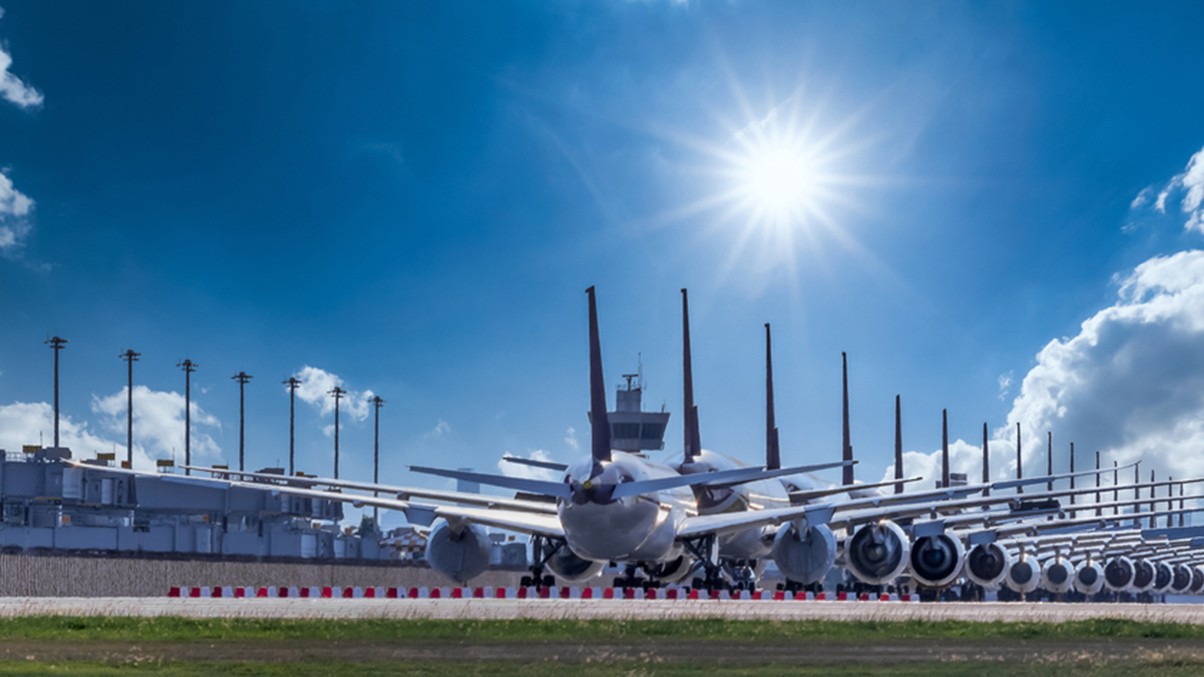In the King’s Speech on 17 July, the Government announced a Bill to support sustainable aviation fuel (SAF) production in the UK. The proposed legislation would provide revenue certainty to encourage investment in the construction of SAF plants across the UK.
This is welcome news for the airline industry and investors who view SAF as the best short-term tool to decarbonise the industry and reduce its carbon footprint (aside from reducing air travel volume). This will also build on the Government’s SAF mandate, which will set a target on fuel suppliers to use SAF as 2% of total UK jet fuel from 2025. The obligation will increase to 10% in 2030, and then to 22% in 2040 (though it has been announced that fines for non-compliance are unlikely, “civil penalties for intentional non-compliance” are a possibility).
In this article, Elaina Bailes and Olivia Shaw consider the challenges of a transition to SAF, including potential litigation risks that could impact the aviation industry’s trajectory.
Fly Net Zero by 2050
Fly Net Zero is a commitment by airlines, agreed at the 2021 International Air Transport Association Annual General Meeting, to achieve net zero carbon emissions by 2050. This resolution will bring air transport in line with the Paris Agreement’s long-term temperature goal. In 2022, governments meeting at the International Council on Clean Transportation Assembly in Montreal in turn adopted a long-term global aspiration goal (LTAG) for international aviation of net-zero carbon emissions by 2050.
Meeting net-zero by 2050 will no doubt represent a significant challenge, but collaboration between airline stakeholders, governments and others across the supply chain (especially the energy industry), reaching net-zero should be achievable.
What is sustainable aviation fuel?
SAF is an alternative fuel made from a variety of materials or ‘feedstocks’ including cooking oil, plant oils, household waste, waste gases, agricultural residues or green hydrogen.
SAF can be categorised into “drop-in” fuels, such as synthetic or bio-fuels that can be automatically incorporated into existing airport fuelling systems; and “non-drop-in” fuels, such as hydrogen, which require changes to existing aircraft and fuelling infrastructure. Burning “drop-in” fuels results in low or net-zero CO2 emissions, whilst burning zero-carbon hydrogen results in CO2-free emissions. Compared to traditional jet fuel (made up of petroleum products such as naphtha, gasoline, or kerosene), SAF reduces lifecycle carbon emissions by up to an average of 70%.
Currently, airlines can fly commercial flights with a blend of 50% SAF and traditional jet fuel. . This means airlines can adopt SAF without the need for costly new infrastructure or fleet changes. Experts expect the demand for air travel to double by 2040, with an annual average growth rate of 3.4%. Given SAF represented only 0.2% of global jet fuel use in 2023, uptake will need to accelerate dramatically to decrease overall emissions.
What are the downsides to SAF?
Despite its advantages, the widespread adoption of SAF faces hurdles such as higher production costs, limited supply, and the need for supportive infrastructure.
SAF is currently more costly than traditional jet fuel, due to limited current availability of sustainable feedstocks and the rate of new production technologies. Higher fuel costs can lead to increased operational expenses for airlines, passed on to higher ticket prices for consumers.
Hydrogen power would eliminate airline CO2 emissions completely and can be produced carbon-free, but it comes with its own challenges. Hydrogen aircraft are much heavier than standard models, and the development of lightweight liquid hydrogen tanks that can be integrated within the airframe is critical. The viability of hydrogen aircrafts also hinges on low-cost green hydrogen production, which requires significant investment and research in energy infrastructure.
The current production capacity for SAF is insufficient to meet the growing demand from the aviation industry. The Government has recognised that more investment is required to meet production at scale and backed a price support mechanism in the form of the Sustainable Aviation Fuel (Revenue Support Mechanism) Bill.
As it stands, the only option to power the existing fleet of global commercial aircraft sustainably in the coming years is to switch from traditional jet fuel to SAF.
Litigation risks
As the aviation industry transitions towards greater use of SAF, it faces litigation risks that could pose significant financial and reputational challenges. These risks stem from regulatory compliance, environmental impact, and consumer protection considerations.
Specifically, disputes may arise in the following circumstances:
- Greenwashing claims: As an emissions-heavy and consumer-focused industry, the aviation sector remains exposed to greenwashing litigation risk from activist climate litigation groups in particular. If an airline promotes its use of SAF without substantial evidence of positive environment impact, it could be deemed to be misleading consumers into believing its flights are more environmentally friendly than they are.
- Claims for breach of fiduciary duty: Unless the costs of fuel alternatives like SAF significantly decrease, airlines may be unable to meet government emissions objectives without suffering financial losses, potentially even towards insolvency. Declining profits could trigger shareholder actions for breach of fiduciary duty and mismanagement claims by creditors in any insolvency. Airline boards therefore need to walk a careful tightrope between enforced regulation, public perception and cost viability.
- Regulatory compliance and investor claims: Under s90 and s90A of the Financial Services and Markets Act 2002, shareholders have a right of redress for untrue or misleading statements and omissions in prospectuses or published information. If airlines misreport their SAF strategies and activities in reducing emissions, followed by a fall in the share price, this could leave the airline exposed to claims for losses incurred by shareholders.
- Contractual disputes: To comply with future regulations, airlines and other companies in the aviation sector will probably need to establish new contracts to procure SAF and other decarbonisation products and services. More expensive fuel will shift the economics of commercial contracts, leading to renegotiations and opening the market to new players. As new relationships form between buyers and sellers, contract disputes may arise as both sides try to navigate rapidly changing regulations.
Conclusion
Transitioning to SAF will be crucial to reducing the aviation industry’s carbon footprint. Continued collaboration between airline stakeholders, coupled with further investment in research, development, and infrastructure, will open a path to making SAF a viable mainstream option for the aviation industry.
As the decarbonisation of the aviation industry accelerates, and with airline-targeted and broader environmental regulation only set to increase, a fascinating new litigation landscape is likely to develop.
The Commercial Aviation Disputes team at Stewarts specialises in complex aviation disputes and can assist if you need legal advice in this area.
You can find further information regarding our expertise, experience and team on our Commercial Litigation and Aviation pages.
If you require assistance from our team, please contact us or alternatively request a call back from one of our lawyers by submitting this form.
Subscribe – In order to receive our news straight to your inbox, subscribe here. Our newsletters are sent no more than once a month.







